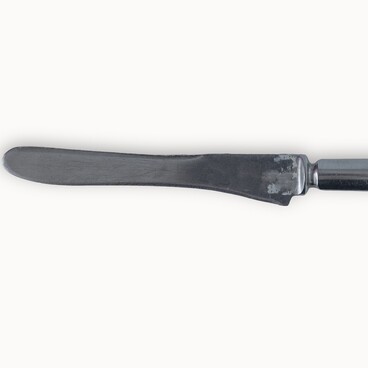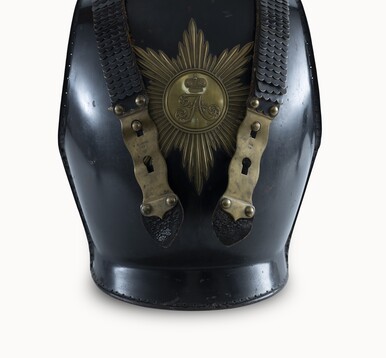The Zlatoust City Museum of Local Lore has a cast-iron cannon of 75 mm caliber. Presumably, the weapon belongs to the period of Pugachev’s rebellion. In 1773, the rebellion, which was raised by Yemelyan Ivanovich Pugachev, grew into a full-scale war. The Zlatoust factories learned about the impending danger from a letter dated October 25, 1773. It was sent by the Iset provincial office.
The Zlatoust factory office wrote to authorities of all levels about the events that foreshadowed the war, but no help was sent from anywhere. After some time, a detachment of ataman Ivan Stepanovich Kuznetsov arrived at the Zlatoust factory. He took control of the manufacture. For six months, the Zlatoust factory supplied Pugachev’s army with cannonballs, canister shot and cast-iron guns of various calibers.
One of such cast-iron cannons is on display in the permanent exhibition of the history department of the Zlatoust Museum of Local Lore. The gun barrel is cylinder-shaped, expanded at the muzzle. At the breech of the barrel, in addition to the ignition hole, a cascabel (protruding part) was made. The annular protrusion in the middle part of the barrel was designed to fix the gun barrel on a wooden carriage (support on which the gun barrel is mounted). The carriage replaced the trunnions, which was very unusual. The carriage was made at a later time, approximately in the 1920s–1930s, with wooden wheels and an iron axle from an old wagon.
On May 30, 1774, the two-thousand-strong Pugachev’s army arrived at the Zlatoust plant. The result of the rebels’ visit to the plant was really deplorable for the residents. It is known that the rebels seized 6 cannons, 250 guns, 25 sabers, 600 spears and 5 pounds of gunpowder, some of the factory horses and 6,500 rubles, which at the time were available in the factory office.
According to the surviving data, 9 people were executed on the orders of Yemelyan Pugachev and almost 500 people died in the course of the military campaign; the plant itself and the residential buildings were burned down. The loss at the Zlatoust plant was estimated at 392,976 rubles.
The rebels inflicted extremely severe damage on the metallurgical and mining industries of the Russian Empire. Ironworks in the Kama region, in the Middle and Southern Urals, which had been developing over decades and provided Russia with metal and other important industrial products, were in ruins. It was not until 1776 that the Zlatoust plant was able to resume its operations.
The Zlatoust factory office wrote to authorities of all levels about the events that foreshadowed the war, but no help was sent from anywhere. After some time, a detachment of ataman Ivan Stepanovich Kuznetsov arrived at the Zlatoust factory. He took control of the manufacture. For six months, the Zlatoust factory supplied Pugachev’s army with cannonballs, canister shot and cast-iron guns of various calibers.
One of such cast-iron cannons is on display in the permanent exhibition of the history department of the Zlatoust Museum of Local Lore. The gun barrel is cylinder-shaped, expanded at the muzzle. At the breech of the barrel, in addition to the ignition hole, a cascabel (protruding part) was made. The annular protrusion in the middle part of the barrel was designed to fix the gun barrel on a wooden carriage (support on which the gun barrel is mounted). The carriage replaced the trunnions, which was very unusual. The carriage was made at a later time, approximately in the 1920s–1930s, with wooden wheels and an iron axle from an old wagon.
On May 30, 1774, the two-thousand-strong Pugachev’s army arrived at the Zlatoust plant. The result of the rebels’ visit to the plant was really deplorable for the residents. It is known that the rebels seized 6 cannons, 250 guns, 25 sabers, 600 spears and 5 pounds of gunpowder, some of the factory horses and 6,500 rubles, which at the time were available in the factory office.
According to the surviving data, 9 people were executed on the orders of Yemelyan Pugachev and almost 500 people died in the course of the military campaign; the plant itself and the residential buildings were burned down. The loss at the Zlatoust plant was estimated at 392,976 rubles.
The rebels inflicted extremely severe damage on the metallurgical and mining industries of the Russian Empire. Ironworks in the Kama region, in the Middle and Southern Urals, which had been developing over decades and provided Russia with metal and other important industrial products, were in ruins. It was not until 1776 that the Zlatoust plant was able to resume its operations.




